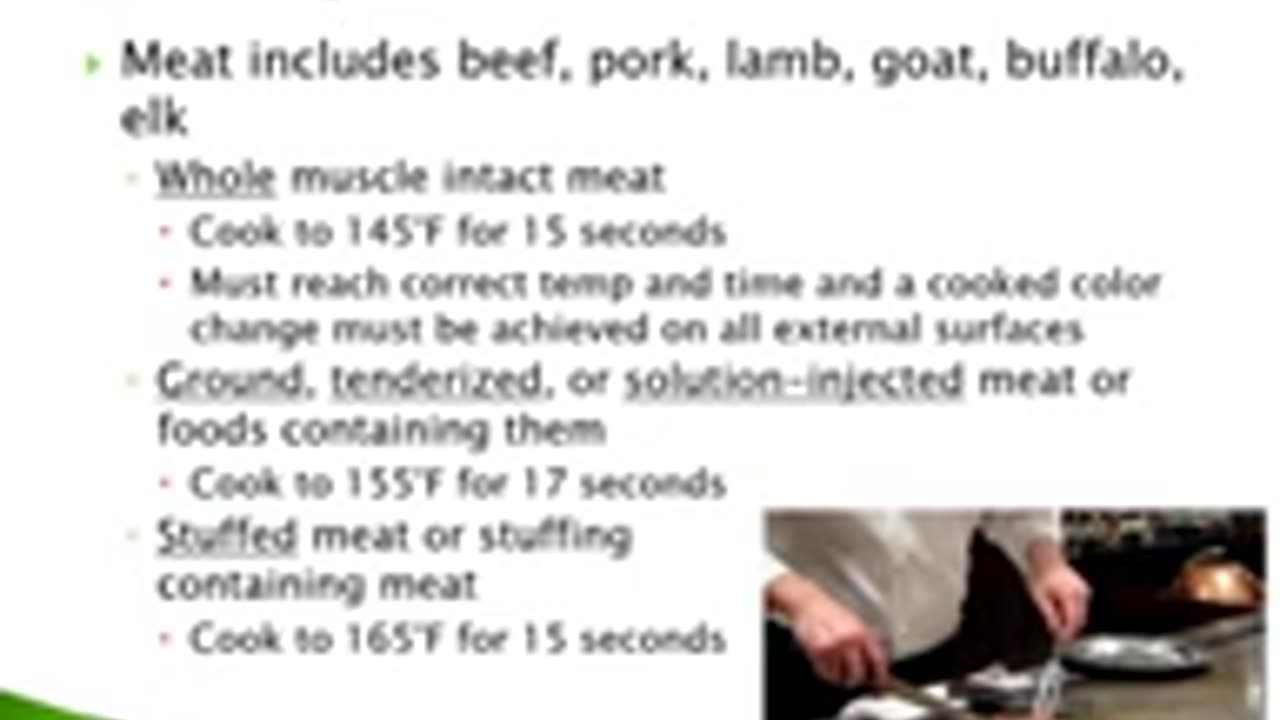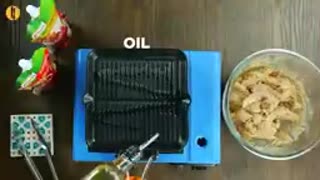Premium Only Content

PART 5_ FDHU FOOD SAFETY FOR FOOD SERVICE EMPLOYEES
It seems like you're asking for **Part 5** of the *FDHU Food Safety for Food Service Employees* series. This section would likely focus on advanced or specific areas of food safety management, auditing, and long-term strategies. Here's a structured outline for Part 5:
---
### **FDHU Food Safety for Food Service Employees - Part 5: Auditing, Compliance, and Continuous Improvement**
---
### **1. Food Safety Audits and Inspections**
- **Preparing for Internal and External Audits:**
- Creating a checklist for compliance with local, state, and federal regulations.
- Conducting mock inspections to identify gaps.
- **Common Violations:**
- Top food safety violations and how to avoid them (e.g., improper storage, incorrect temperatures, hygiene issues).
- **Documentation Best Practices:**
- Keeping accurate records for cleaning schedules, temperature logs, and training programs.
---
### **2. Managing Food Safety Incidents**
- **Developing an Incident Response Plan:**
- Key steps to take during a contamination or foodborne illness event.
- Communicating with health authorities and customers effectively.
- **Post-Incident Recovery:**
- Restoring customer trust through transparency.
- Revising procedures to prevent future incidents.
---
### **3. Advanced Food Safety Practices**
- **Food Defense Strategies:**
- Protecting against intentional contamination (e.g., tampering, sabotage).
- Implementing access control measures in the kitchen and storage areas.
- **Risk Assessment and Mitigation:**
- Identifying critical risks unique to your facility.
- Prioritizing resources for high-impact safety concerns.
- **New Techniques and Tools:**
- Adopting innovative food safety equipment (e.g., UV sanitation, rapid microbial testing).
---
### **4. Compliance with International Food Safety Standards**
- **Understanding Global Food Safety Protocols:**
- Standards such as ISO 22000, Global Food Safety Initiative (GFSI), and others.
- Harmonizing practices for businesses with international suppliers.
- **Export and Import Regulations:**
- Ensuring compliance when sourcing or selling food internationally.
---
### **5. Employee Engagement and Accountability**
- **Empowering Employees to Report Issues:**
- Encouraging open communication about potential hazards.
- Implementing anonymous reporting systems for safety concerns.
- **Incentives for Excellence:**
- Reward programs for consistent adherence to food safety protocols.
- Recognizing employees who go above and beyond in ensuring safety.
---
### **6. Adapting to Industry Trends and Challenges**
- **Handling Emerging Risks:**
- Addressing new pathogens, supply chain disruptions, or climate impacts on food safety.
- **Incorporating Technology:**
- Using IoT (Internet of Things) sensors for real-time temperature and humidity monitoring.
- Blockchain for traceability and accountability in the food supply chain.
- **Sustainability and Safety:**
- Balancing eco-friendly practices with strict safety standards.
---
### **7. Continuous Improvement in Food Safety**
- **Regular Training Updates:**
- Ensuring staff stays informed about new regulations and best practices.
- **Reviewing and Revising Procedures:**
- Conducting periodic reviews of SOPs (Standard Operating Procedures) to ensure relevance.
- **Leveraging Customer Feedback:**
- Using complaints and suggestions as opportunities for improvement.
---
### **8. Leadership and Organizational Responsibility**
- **Role of Management in Food Safety:**
- Leading by example and ensuring consistent enforcement of policies.
- **Creating a Safety-First Culture:**
- Fostering teamwork and shared responsibility among staff.
- **Collaboration with Regulatory Bodies:**
- Building positive relationships with local health departments and industry experts.
---
Would you like this content expanded, focused on specific subtopics, or converted into a training module?
-
 1:35
1:35
HSESafetyInformation
7 days agoMutton Chops two ways- baked & grilled Recipe by Food Fusion (Eid Recipe)
27 -
 1:09:33
1:09:33
Glenn Greenwald
15 hours agoMichael Tracey Reports from CPAC: Exclusive Interviews with Liz Truss, Steve Bannon & More | SYSTEM UPDATE #412
105K87 -
 56:02
56:02
Sarah Westall
11 hours agoBiohacking & Peptides: Weight loss, Anti-Aging & Performance – Myth vs Reality w/ Dr. Diane Kazer
60.6K18 -
 11:22
11:22
Bearing
21 hours ago"Anxious & Confused" Federal Workers FREAK OUT Over DOGE Efficiency Email 💥
83.8K74 -
 1:31:20
1:31:20
Flyover Conservatives
1 day agoUS STOCK MARKET: Sinking Ship - Dr. Kirk Elliott; How I Fought Back Against Woke Schools & Stopped Gender Bathrooms - Stacy Washington | FOC Show
78.6K4 -
 1:08:09
1:08:09
Donald Trump Jr.
16 hours agoFBI Dream Team, Plus Taking Your Questions Live! | Triggered Ep.219
213K285 -
 7:32:37
7:32:37
Akademiks
15 hours agoDrake and PartyNextDoor '$$$4U' Album Sells 250K first week. BIG AK IS BACK.
132K19 -
 3:12:08
3:12:08
MyronGainesX
14 hours ago $33.46 earnedDan Bongino Named FBI Deputy Director, Trump Meets Macron, And More!
107K32 -
 3:12:31
3:12:31
vivafrei
14 hours agoBarnes Live from Seattle - Defending Benshoof in a Case that is CRAY CRAY!
177K54 -
 2:12:12
2:12:12
Robert Gouveia
14 hours agoLiberals EXPLODE over Elon's Email; Lawsuits FLY; Sanctions?? Congrats Dan!
134K79